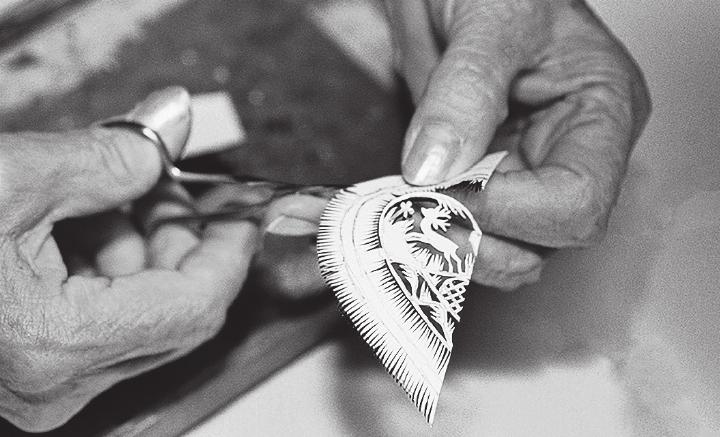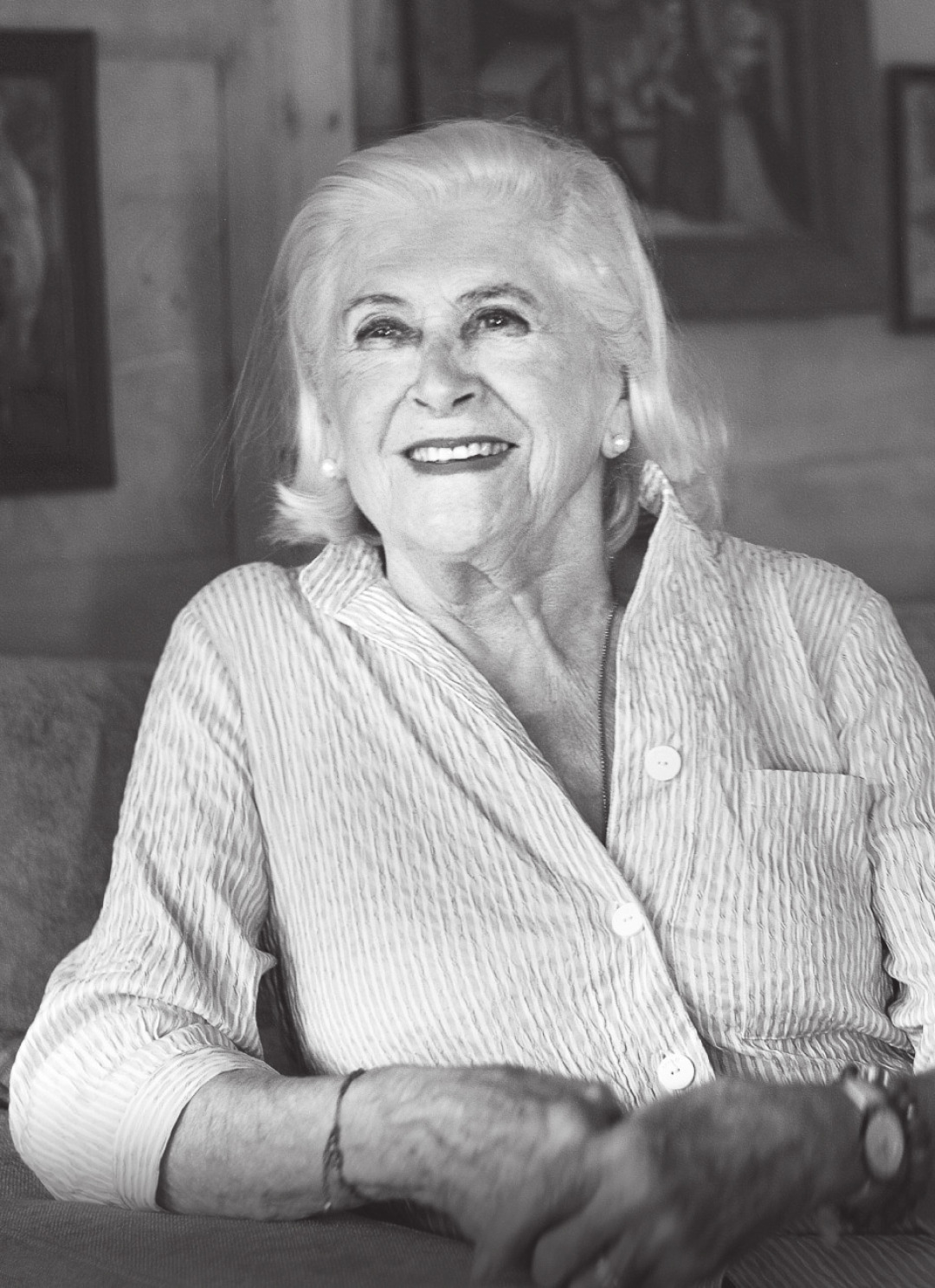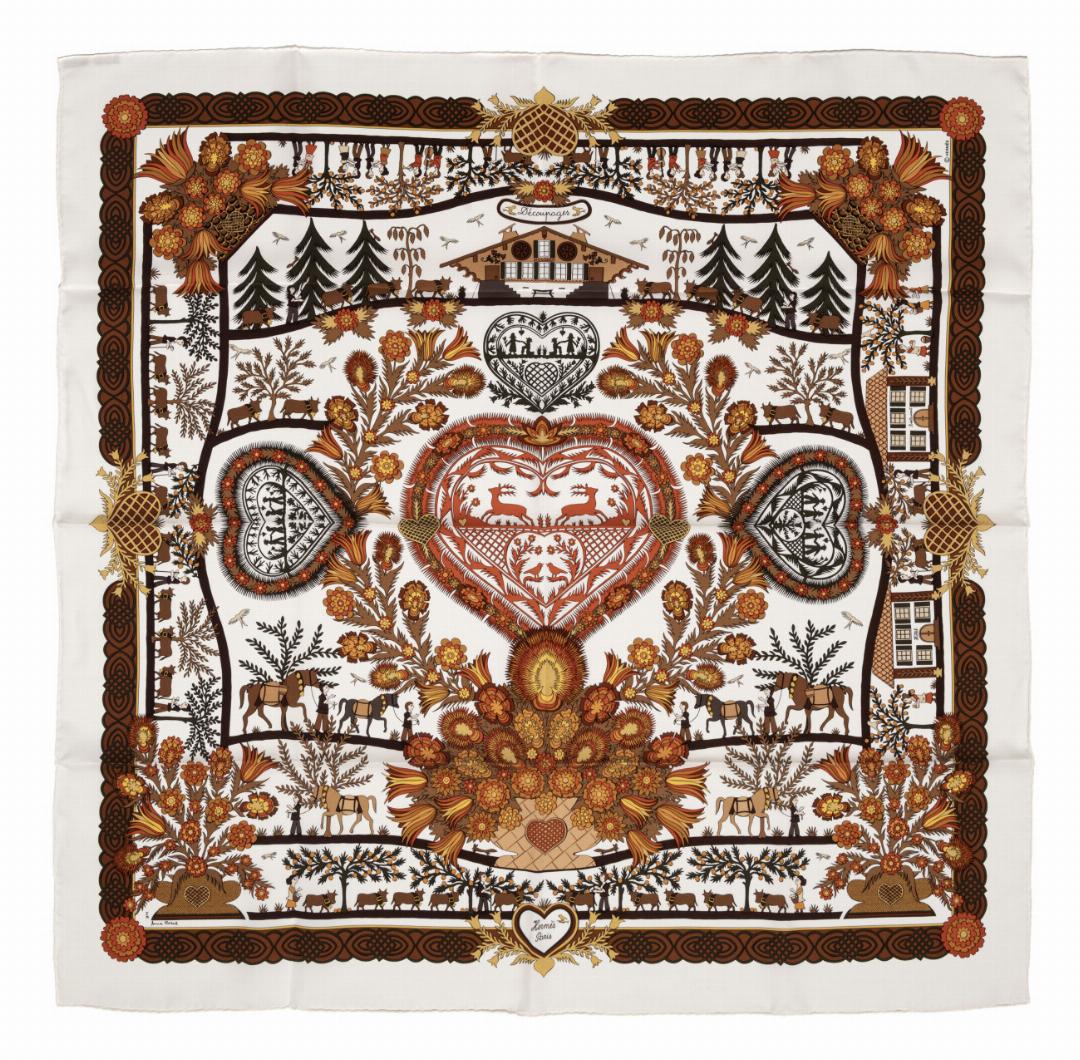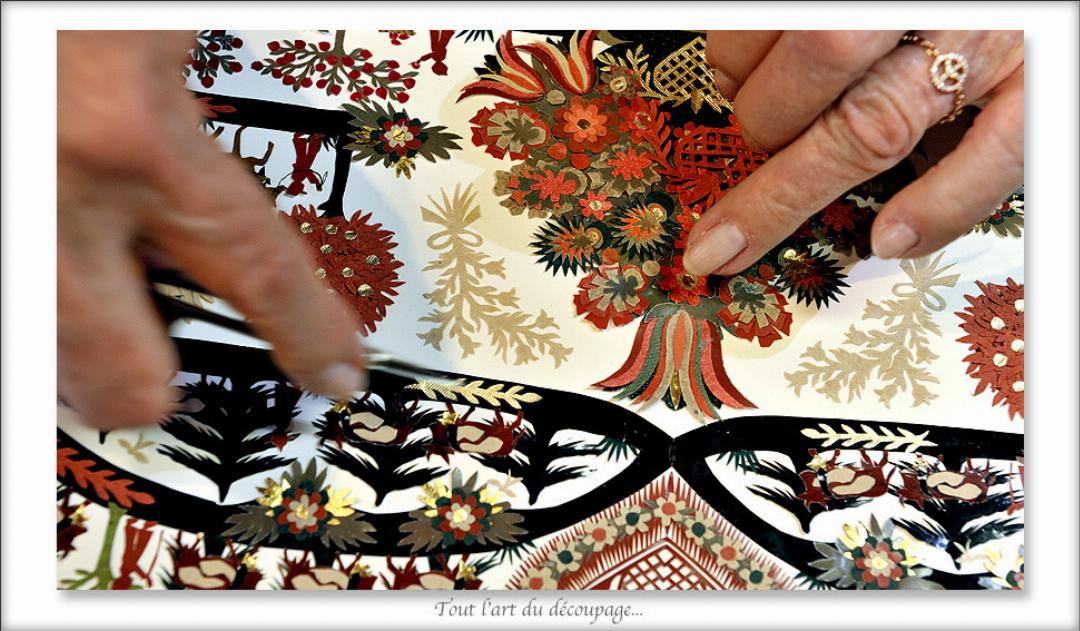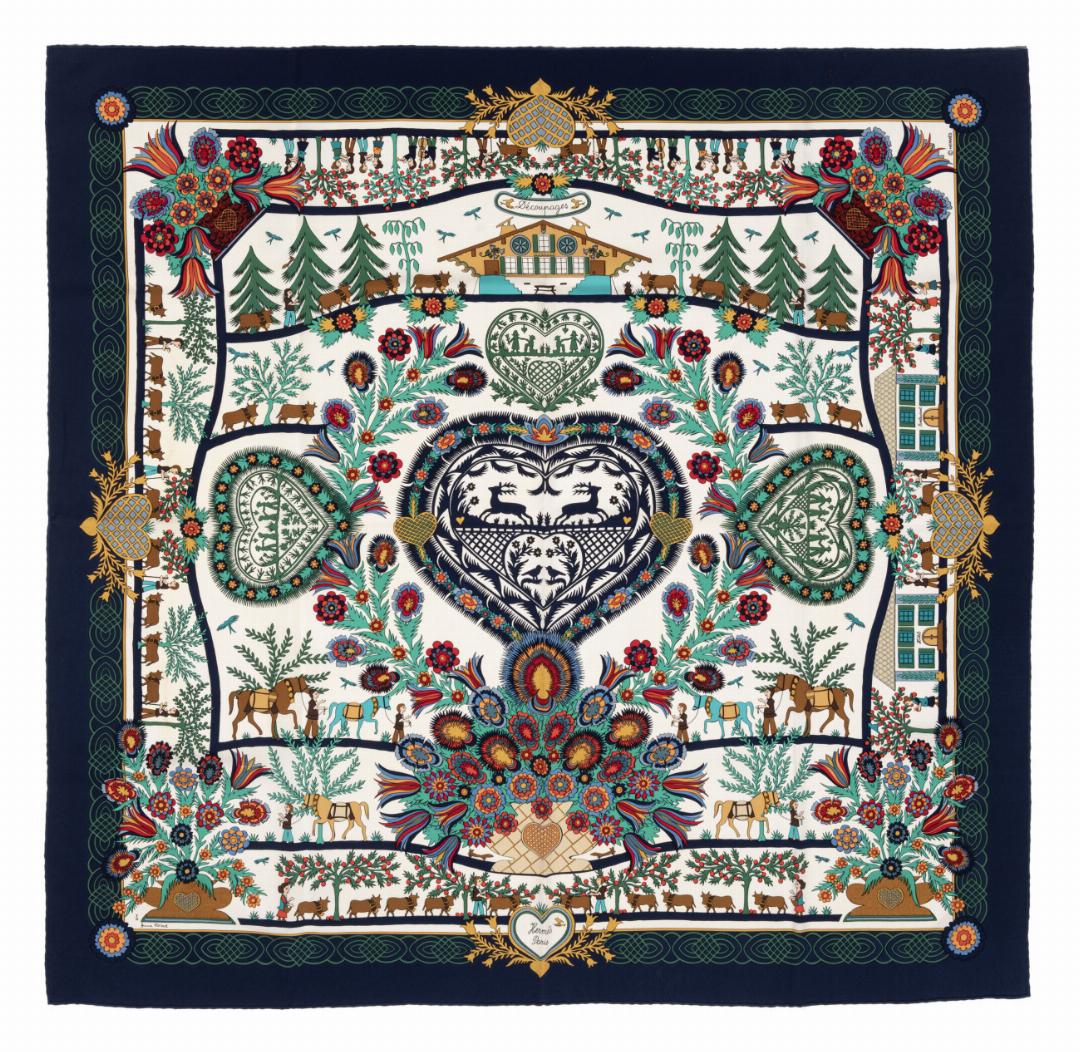Anne Rosat & the art in Hermès
28.01.2023 Profile, Traditions, Profile, Magazine, Arts & CultureFrom paper-cutting or découpages to textiles
In 1937, a century after the French luxury house Hermès was founded, Robert Dumas, Émile Hermès’ sonin-law, designed the first scarf using woodblocks.
Thus, the first Hermès silk ...
From paper-cutting or découpages to textiles
In 1937, a century after the French luxury house Hermès was founded, Robert Dumas, Émile Hermès’ sonin-law, designed the first scarf using woodblocks.
Thus, the first Hermès silk scarf – known in French as carré, or “square” – is in fact the same vintage as local artist Anne Rosat who remains at the forefront of découpages or paper-cutting, as evidenced in Château-d’Œx at the newly expanded Musée du Vieux Pays-d’Enhaut as well as the Galerie du Temple opposite. Thirty or so years ago, Anne Rosat’s longtime Swiss gallerist Guy de Montmollin felt the need for a book about her work. He approached a publisher, and the resulting first of three books found its way into the hands of Robert Dumas’ son, the highly-talented Hermès chairman and artistic director, Jean-Louis Dumas (1938–2010) who commissioned her to create a carré.
To this day, Rosat is the only Swiss artist to have done so.
Hermès carré
Hermès carré is typically 90cm x 90cm in size; so too was the design which necessitates a year-and-a-half for completion near Lyon, long the cradle of textiles, and silk in particular. According to Hermès “scarves are made from silk twill, an incredibly soft material with a bright white quality. Its serge weave gives it its specific hold and feel. Woven obliquely, the silk is crease-resistant and over time it softens and develops a patina."
Edges are hand-stitched and hand-rolled by Hermès artisans. The screens for printing each design are engraved, once the number of colours are decided. Fittingly, Hermès creative director of women’s silk, Cécile Pesce describes colour as a language “that we learn to master: we start by learning to compose sentences and inventing new expressions, and then we tell stories."
Anne Rosat’s Hermès carré has 26 colours, about the average, with the maximum being 48.
Her scarf depicts festive scenes steeped in tradition of the region when farmers in their centuries-old style-of-dress proudly parade along with their prized cows decorated with flowers; elsewhere, hay gathered, villagers dance in the open-air. Hearts, bouquets, horses and other animals also figure prominently along with the classic chalet design: with two sets of stairs on either side of the façade.
Rosat favours colours that are true to life: Alpine scenes which need no embellishment, as they are simple yet stunning, come to life.
Her work is emboldened by the rich textures and a confluence of styles, characteristic of this region, which blend so harmoniously to create a coherent whole. As it happens, her own birthday coincides with the Swiss national holiday on August 1st, when tradition dictates that each region celebrate the particularities that make it unique: what better way than mastering this 19th-century art-form emblematic of this region.
Clearly, the Hermès carrés by Rosat remain highly sought-after, as only last month, two sold at Piguet auctions in Geneva for CHF 875 each. New carrés cost CHF 500 each at Hermès boutiques.
Being handed down from generation to generation applies as much to Hermès objects as it does to paper-cutting or découpages. First, in the making of both. The knowledge is intergenerational in transfer. Second, the objects themselves, given their quality, become family heirlooms, bearing beautiful testament to the longevity of craft and design.
BY ALAN NAZAR IPEKIAN
ANNE ROSAT
A teacher by profession born in Belgium, Anne Colin married Swiss Aloïs Rosat and moved to Les Moulins, near Gstaad in 1958. She has been practising the ancient art of paper-cutting or découpages since 1969. The Cooper Hewitt, Smithsonian Design Museum, in New York not only exhibited her work but also acquired it for its collection. Similarly, the prestigious Swiss Gianadda Foundation in Martigny also held two exhibitions as did amongst other cities Paris, Lausanne, and Geneva. A true humanitarian, she founded and chaired for fifteen years, the “Anne and Aloïs Rosat-Colin Fund” which helps school pupils from disadvantaged multicultural backgrounds and young disabled people. For the past two decades, Rosat also worked tirelessly in Africa at Burkina-Faso to further the education of girls, and in fostering of income-generating activities for women in villages, including but not limited to: grain mills, micro-credits, encouraging the manufacturing of products for sale in local markets, the all too important drilling of wells for drinking water, and Kindergarten. Moreover, Rosat is a board member of the International Federation for Parenting Education, an International Non-Governmental Organisation (NGO), therein also representing the region of Sub-Saharan Africa in an ancillary capacity. In recognition for her body of work and humanitarian efforts, she has been the recipient of awards both in Switzerland as well as in her native Belgium.
HERMÈS
Since 1837, Hermès has remained faithful to its artisan model and its humanist values. The freedom to create, the spirit of innovation, the constant search for beautiful materials, the transmission of savoir-faire of excellence, and the aesthetic of functionality all forge the singularity of Hermès, a house of objects created to last. An independent, family-owned company encompassing 16 métiers, Hermès is dedicated to keeping most of its production in France through its 52 workshops and production sites.




